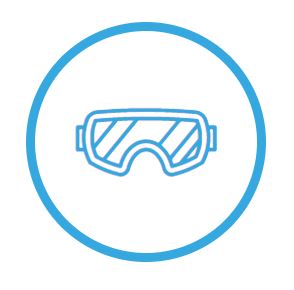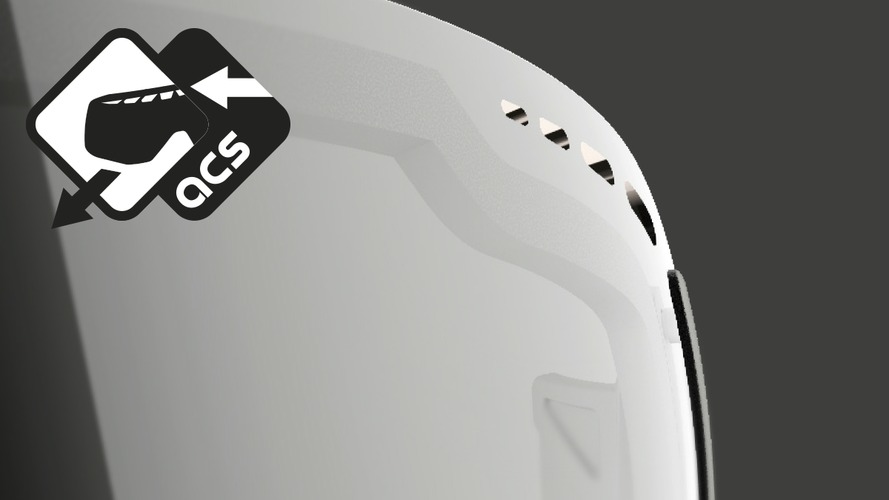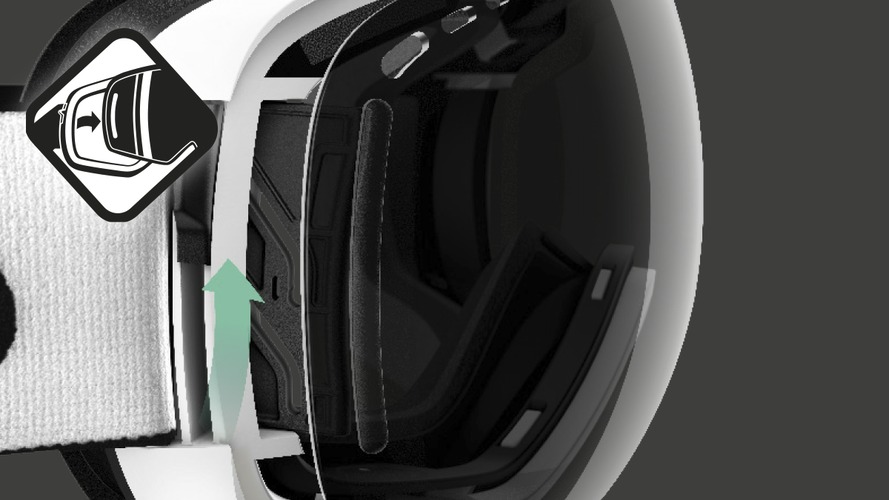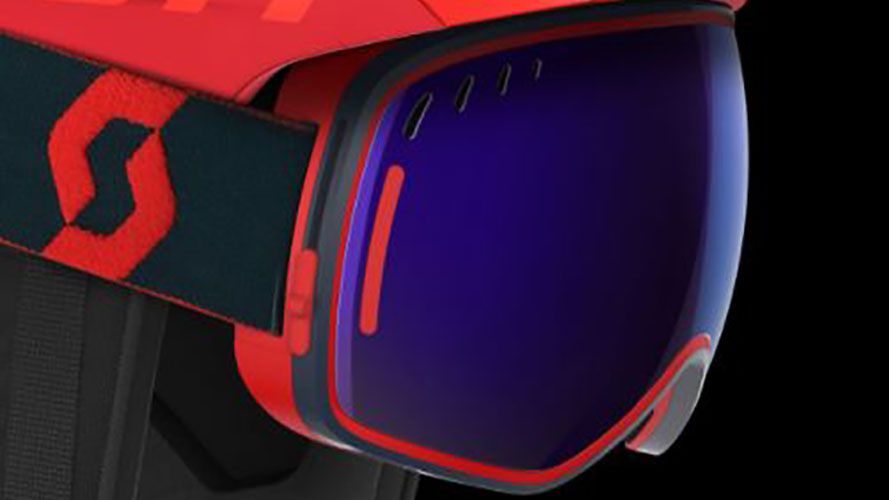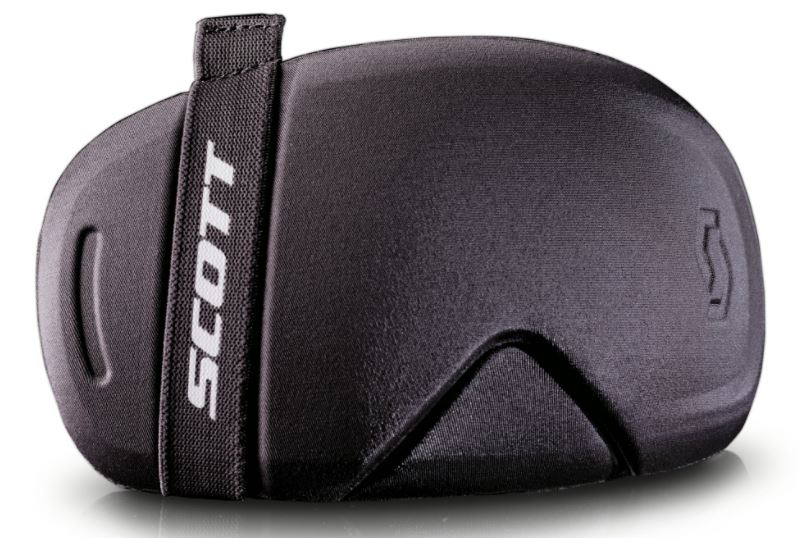Ski mask screen
HOW TO CHOOSE THE RIGHT SCREEN
A ski and snowboard mask offers protection against wind and cold, and against light. Your vision is the basis of your practice. Without good vision, you won't have the confidence to enjoy your sport to the full.
Make sure you choose your mask according to the frame and the shield. The following are key features to consider when choosing the right shield:
-
shape and thickness of the shield
-
colour and shield tint
-
ventilation
-
shield type and technology
Everything you need to know about shields, shape, colour, different features to prevent fog and glare.
All masks guarantee 100% protection against ultraviolet rays (UV-A and UV-B). However, it is the level of light transmission that will differentiate one shield from another, in order to avoid glare or poor visibility.
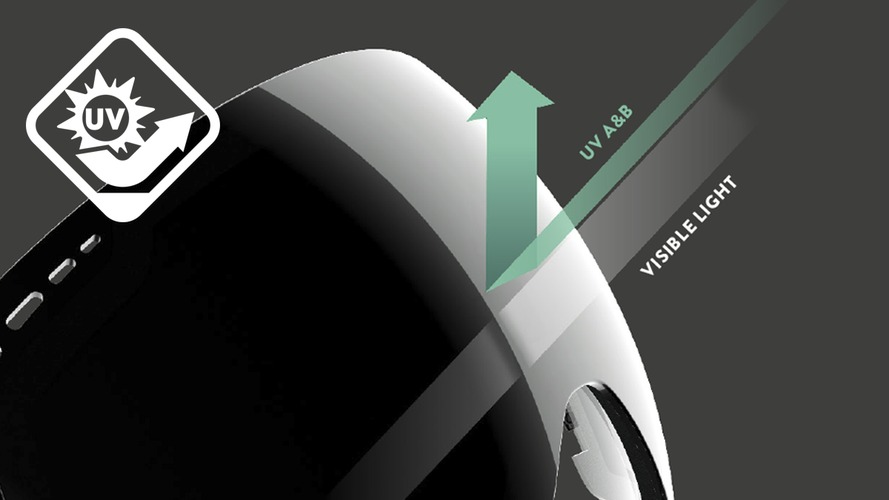
SHAPE AND THICKNESS
SHAPE
Cylindrical shape (flat)
These glasses bend horizontally while remaining flat vertically. Cylindrical lenses offer good performance at an attractive price.
Spherical shape
These are higher end masks and the shape of the lens follows the shape of the retina to maximise the field of vision.
- Peripheral vision: larger field of view
- Glare: Spherical shields have strategically planned curves to reduce glare.
- Distortion: no image distortion in spherical lenses.
- Avoid fog: the spherical shield follows the shape of your face, there is no gap between your face and the mask, which means better insulation.
SCREEN THICKNESS
Single shields have an anti-fogging treatment on the inside of the glass. This technology means you don't have to wipe the inside of your mask.
Double shields ensure that fog doesn't stay. With an insulating air pocket between the two shields that prevents fogging inside the mask. This allows you to ski comfortably and safely throughout the day.
Good ventilation on the inside of the mask also helps to avoid the temperature difference with the outside, and thus reduces the chances of condensation and therefore fogging.
COLOUR AND SCREEN TINT
TINT
There are dozens of lens colours to choose from that vary from brand to brand: each colour will filter light differently and offer unique advantages in certain weather conditions. The amount of light that can pass through a shield is called visible light transmission (VLT). It is expressed as a percentage of light allowed in the glass and ranges from 0% to 100%.
- Some lenses are designed to work much better in low light and low visibility situations, such as snow, fog or dark light. These low-light lenses will allow a higher percentage of LTV ranging from 60 to 90% in yellow, pink and blue colours.
- Lenses that will work best on sunny days with high visibility where it is a matter of dimming the lights. Will have a lower percentage of LTV between 5 and 20% in dark shades of black, grey and gold.
- Of course, there are lenses that fall somewhere in between that work quite well in all weather conditions and are excellent if you encounter light changes during the day. Category 2 with an LTV between 18 and 43%.
CATEGORY
4 Types of categories
- S1 shield (category 1) for cloudy days
- S2 (category 2) shield for mixed weather
- S3 (category 3) shield for sunny days
- S4 shield (category 4) this type of shield is very rare, darker, ideal for extremely sunny days
Learn more about the shield categories..LIGHT-SENSITIVE OR PHOTOCHROMIC
Light-sensitive or photochromic shields automatically adapt to the brightness outside.
Category S1-S3 or S2-S4, (progressive adaptation of the lens tint to the light conditions)
NOTE: The main advantage of this type of shield is that it adapts itself to changing conditions, making it extremely versatile. Unfortunately, the lenses do not adjust instantly. The shield may take several minutes to fully adjust to the light.
COUNCIL: Do not touch the inside of the lenses without a special wipe. An internal scratch causes the shield to malfunction.
SHIELD VENTILATION
A well-ventilated shield is bound to be less foggy. It is important to ensure that you choose a mask with optimal ventilation on the face shield and mask frame.
ACS
ACS ventilation incorporates shield air inlets on the mask lens and frame air outlets on the bottom of the mask. The result is a sophisticated ventilation system that helps prevent condensation and fogging.
RAM SYSTEM
Patented "RAM" ventilation system that directs airflow into the mask using a clean, controlled top-to-bottom pattern, eliminating "swirling air" and fogging.
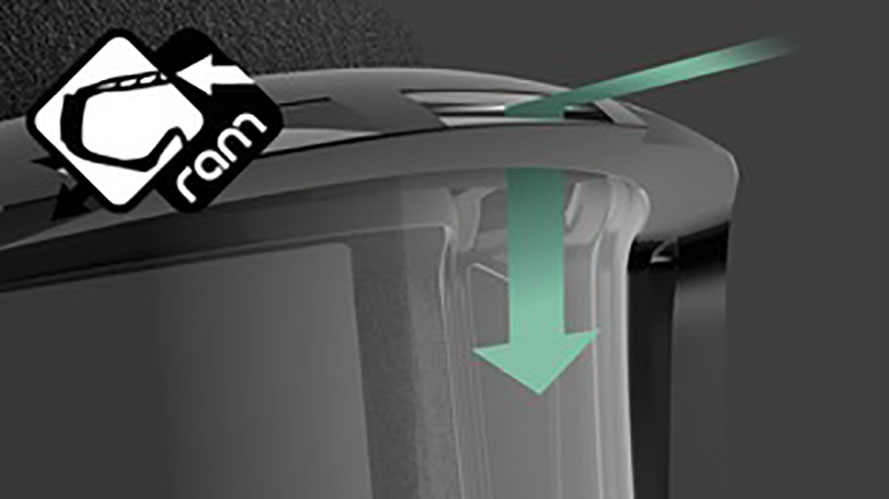
SHIELD TYPE AND TECHNOLOGIES
SPECTACLE WEARER
- OTG ski masks (Over The Glasses) have an optimised frame and fit to adapt to the shape of the goggles and offer them total protection, thanks to a specific and adapted construction. As well as a strap clip for the closing system. Specially adapted for people who wear spectacles (OTG).
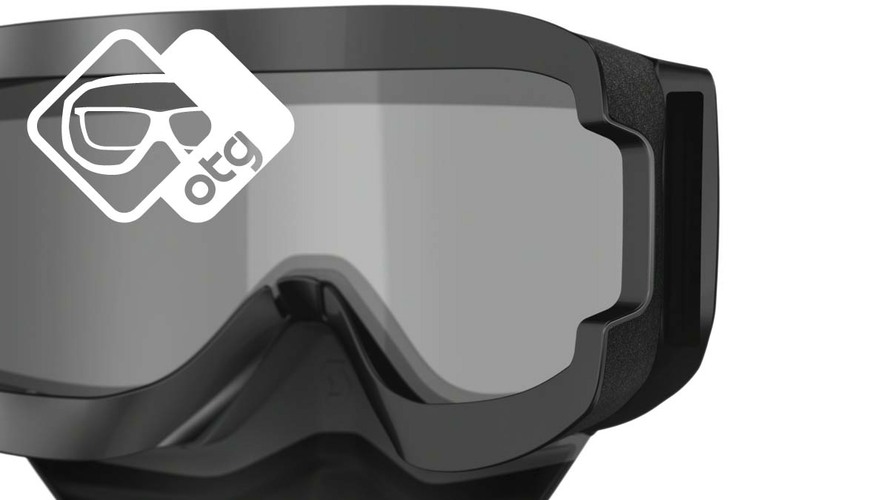
ANTI-BUEE TREATMENT
NOFOG™ ANTI-FOG LENS TREATMENT : Scott lenses have been permanently treated with No Fog™, which prevents condensation and fogging.
COUNCIL: Some coatings are more durable than others. Be sure to read the manufacturer's instructions as improper mask maintenance can cause the anti-fog coating to wear.
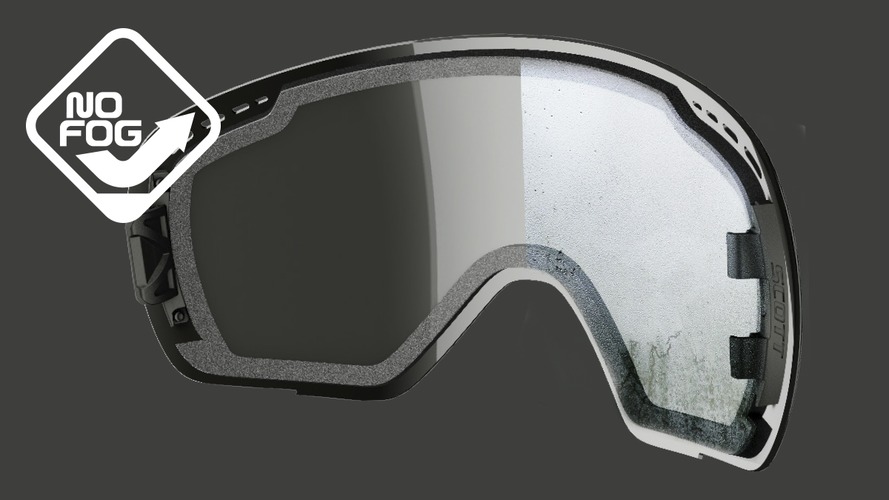
INTERCHANGEABLE SCREEN
Equipped with a brand-specific shield-changing system, LCG masks SCOTT 's signature and BOLLE's VIRTUOSE .
- Allows you to maximise your visibility and performance throughout the day.
- Very easy and quick to use
- Convenient to carry
- Slightly more expensive
The interchangeable shield system and the Fit System allow skiers to fully adapt their vision. Thanks to the interchangeable shield system and its ultra-thin portable shield case, you are now ready to take on any mountain challenge quickly and efficiently.
Always sold with an extra shield and a special shield pocket, semi-rigid and very thin to fit easily in a pocket.
MIRROR SCREEN
This is a coating on the outside of the glass that reflects more light than non-reflective glass.
- Reduces glare
- Better clarity in light conditions
POLARIZED SCREEN
When light is reflected from certain surfaces, it tends to be reflected at a higher intensity from perpendicular angles. By acting as a vertical light filter, polarised lenses are able to reduce glare much more effectively than standard mirror lenses while improving overall visual clarity and contrast. Polarised lenses are ideal for snow sports and significantly reduce eye strain.
OPTIVIEW
These lenses, made in Europe, are made of polycarbonate for comfort and high impact resistance. Scott's proprietary injection moulding process and hard coating ensure that every OptiView lens is optically correct and won't distort. Scott OptiView lenses are available in spherical and cylindrical versions.
- Comfort
- Anti-shock
- High resistance
FIT SYSTEM
For a perfect fit.
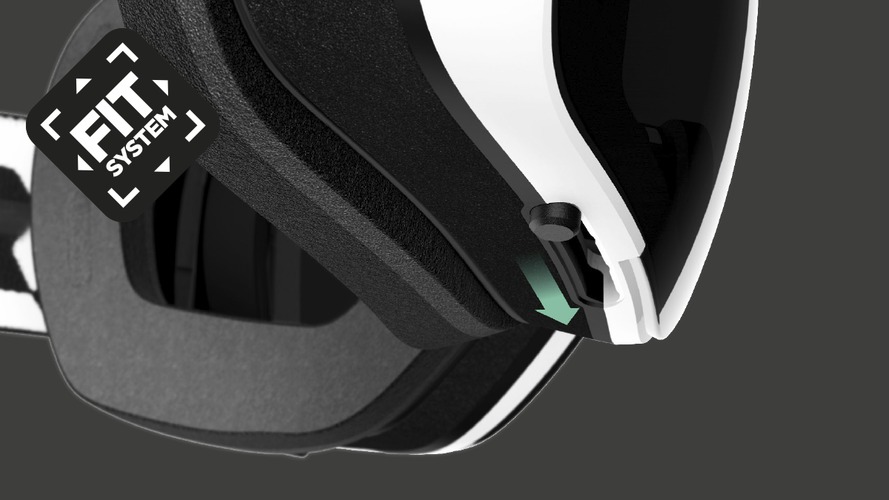
SEE OUR MEN'S GOGGLES SEE OUR WOMEN'S GOGGLES SEE OUR CHILDREN'S GOGGLES

